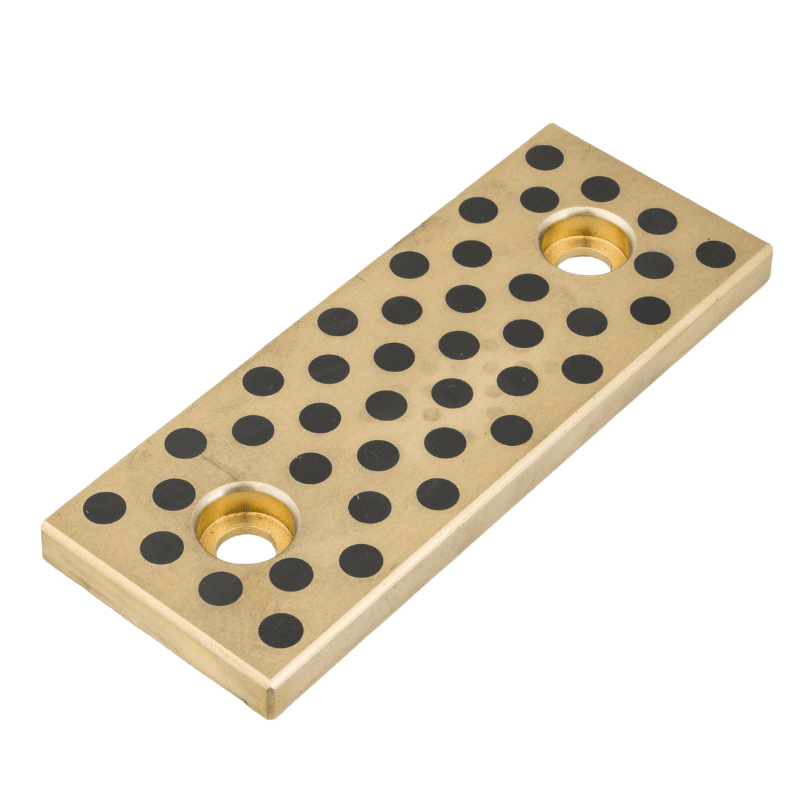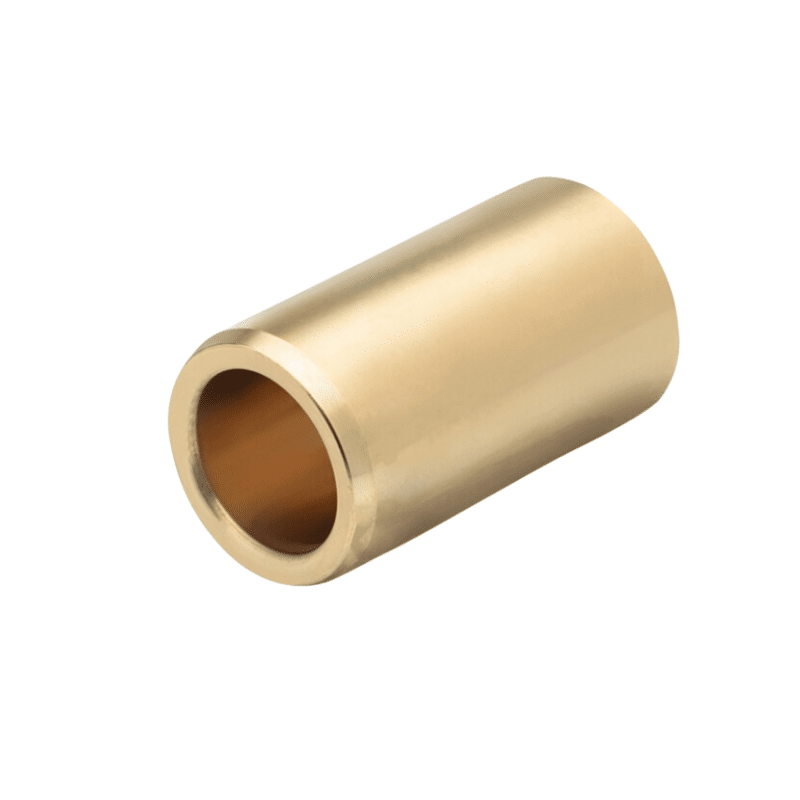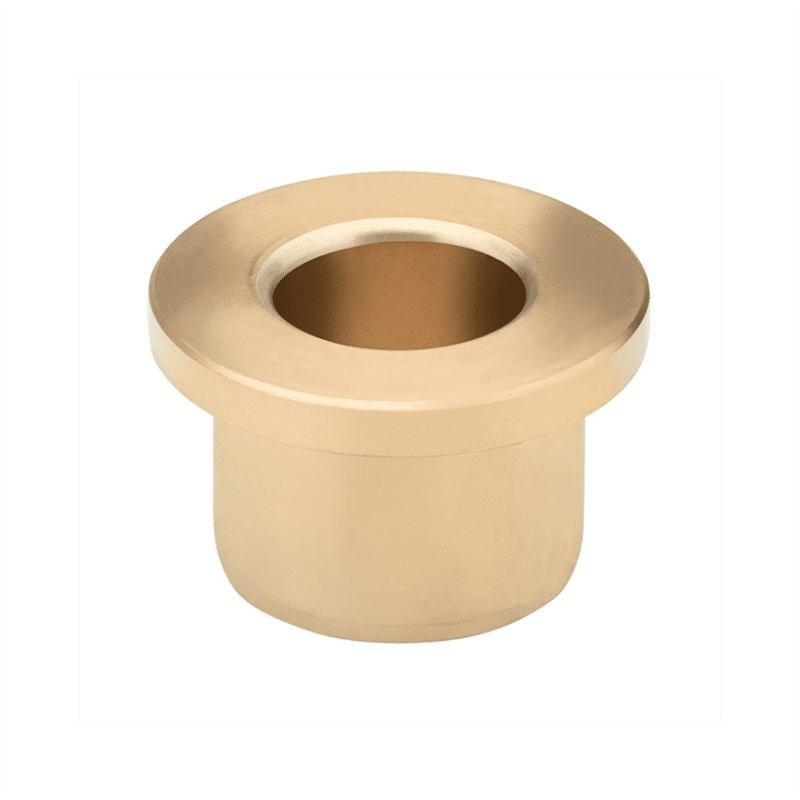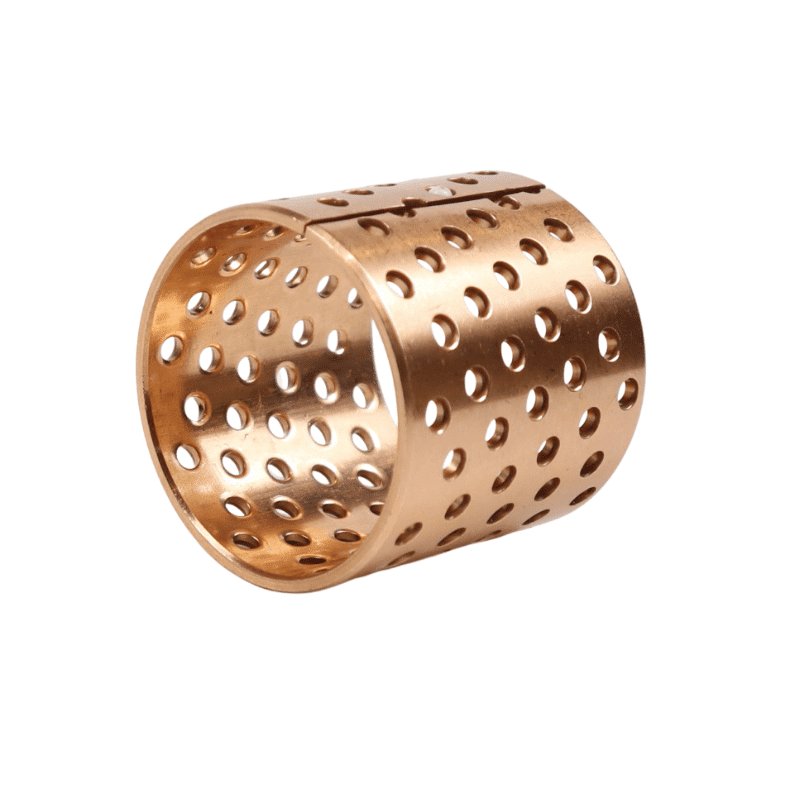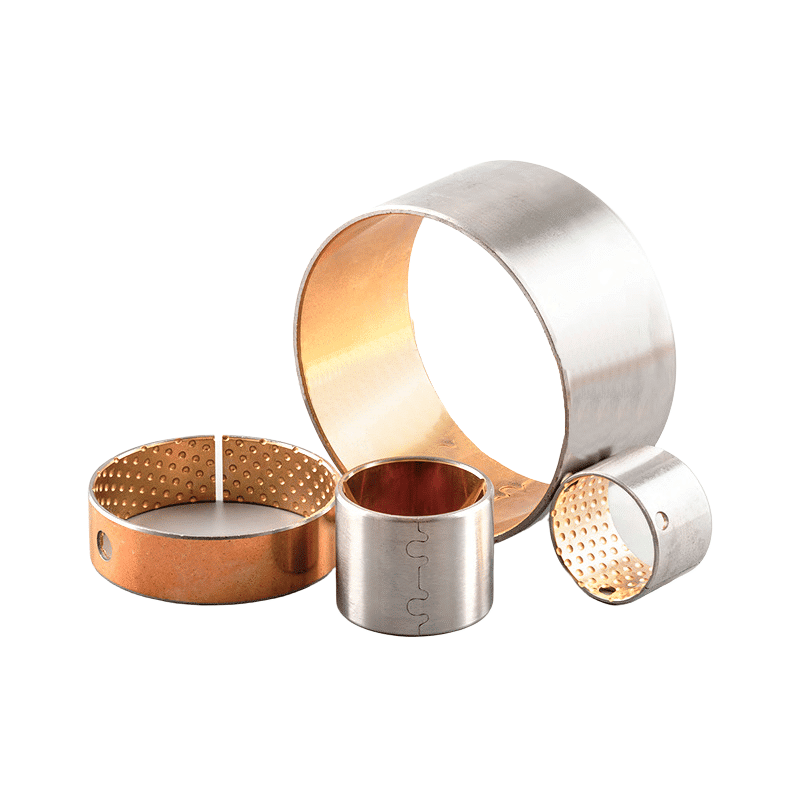Powdered Metallurgy Bronze Bushing
Powdered Metallurgy Bronze Bushing
Say goodbye to the hassle of frequent lubrication maintenance. Our self-lubricating technology ensures smooth operation and reduces wear and tear, extending the lifespan of your equipment. Experience uninterrupted productivity and cost savings as you bid farewell to the need for messy lubricants and time-consuming upkeep.
Manufacturing on Demand, alternative solutions
Powdered Metallurgy Bronze Bushing
Powdered Metallurgy Bronze Bushing, Designing for P/M
Powder metallurgy (PM) is a manufacturing process where metal powders are compacted into desired shapes and then sintered at high temperatures to bond particles, Materials: Commonly used metals include copper! Powder metallurgy offers cost-effective solutions for producing high-quality, intricate metal parts, making it a vital process in modern manufacturing.
what is ASTM b 438?
ASTM B 438 is a standard specification for bronze-base powder metallurgy (PM) bearings that are oil-impregnated. This specification covers bearings made primarily from elemental copper, tin, lead, and graphite powders. These bearings are produced using powder metallurgy technology and are designed to be self-lubricating due to the oil impregnation process.The standard includes requirements for the chemical, physical, and mechanical properties of the bronze-base PM materials. It specifies the density of bearings supplied with lubricant, the minimum oil content, and radial crushing strength requirements. The standard also provides guidance on the chemical analysis of the materials, which can be obtained by milling, drilling, filing, or crushing a bearing with clean dry tools without lubrication.
Powdered Metallurgy Bronze Bushing, Overview of Bronze Bushing Bearings Produced through Powder Metallurgy
Powder Metallurgy (PM) is a technique employed to manufacture bronze bushing bearings and other items. This method entails compressing bronze powder into a specific form and dimension, then heating it at elevated temperatures for sintering, which fuses the particles. PM bronze bushings are noted for their longevity, resistance to wear, and inherent lubrication features, making them ideal for a variety of industrial uses.
ASTM B438 was developed in accordance with internationally recognized principles on standardization and is applicable to the purchase of bronze-base bearings that were formerly covered by military specifications for those applications that do not require military bearings.
Design Considerations for Powdered Metallurgy (PM)
Bearings are ideally suited for PM due to its inherent controlled porosity, facilitating self-lubricating properties. The final form of a sintered bearing is predominantly determined by the tooling design and production process. The design of component geometry and the choice of materials tailored for the PM process significantly impact the tool’s lifespan and, by extension, the cost of the manufactured part. Adhering to specific design principles relevant to PM can prove beneficial.
Shapes:
PM is adaptable to various shapes. It allows for the creation of unique or complex shapes by merging two simpler parts into one. The design possibilities are only constrained by the creative concept. For instance, small flanges, steps, or overhangs can be achieved by machining a notch in the die, but oversized flanges may complicate part ejection. It’s advisable to design with generous edge radii and uniform dimensions along the pressing direction for ease of production and ejection.
Wall Thickness:
A minimum wall thickness of 0.060 inches (1.52 mm) is recommended, and the length-to-wall thickness ratio should not exceed 8:1. This ensures adequate tool strength and effective powder distribution within the die, crucial for achieving consistent part density. For structures where the length-to-wall ratio is greater, special measures are necessary to ensure even powder distribution and density.
Edges:
Design parts with chamfers instead of radii to avoid burrs. A chamfer angle between 30-45 degrees, coupled with a 0.005-inch (0.13 mm) to 0.015-inch (0.38 mm) flat, will prevent thin, feathered edges.
Tolerances:
PM is efficient at producing parts with close tolerances directly to their final dimensions, ensuring consistent quality across multiple parts. Consult with us for specifications on your particular parts.
Surface Finish:
The surface finish quality in PM depends on the part’s density and the tool’s finish, potentially eliminating the need for additional finishing processes.
Part Size:
The maximum size of PM parts is constrained by the compressibility of the powder and the press’s capacity. Since compaction is performed vertically, the length of parts in the pressing direction is limited. The compression ratio also influences the feasible length of vertical parts.
Manufacturing Procedure
Design and Material Choice: The initial phase is designing the bushing to meet particular application needs, including size, material selection, and blueprint creation. Bronze is favored for bushings owing to its superior wear and corrosion resistance. It can be combined with lubricants like graphite or PTFE to enhance self-lubrication.
Powder Preparation and Compression: Bronze powder is prepared and compressed into the desired form using a press. This step involves exerting pressure on the powder inside a mold to create a “green” component that retains its shape.
Sintering: The shaped component is then heated in an oven at a temperature below bronze’s melting point. This sintering strengthens the bushing by bonding the bronze particles.
Finishing: Post-sintering, the bushing might be subjected to further finishing to achieve accurate dimensions and enhance the surface quality. Surface treatments like plating or coating may be applied to improve corrosion resistance and wear properties.
Quality Assurance and Evaluation: The final stage includes thorough inspection and testing to ensure the bushing conforms to the required quality standards, involving checks on dimensions, surface quality, and material properties.
Benefits of PM Bronze Bushings
Wear Resistance: These bushings offer outstanding wear resistance, suitable for high friction and wear conditions.
Corrosion Resistance: Bronze’s natural corrosion resistance enables the bushings to function effectively in harsh settings, including those with moisture or corrosive materials.
Self-Lubrication: The capability of impregnating PM bronze bushings with lubricants allows for self-lubrication, reducing maintenance needs and prolonging lifespan.
Cost Efficiency: The PM method is economical and efficient, particularly for creating complex shapes or large quantities of bushings.
Customization: Bronze bushings can be tailored with different alloys and compositions to address specific needs, like high load capacity and resistance to shock and impact.
Applications
PM bronze bushings find applications in various industrial sectors, such as iron and steel production, food processing, injection molding, automotive machinery, earthmoving equipment, and pumps. They are especially preferred in applications involving low speed, high load, and extreme conditions due to their robust performance.
In conclusion, PM bronze bushing bearings are a dependable and effective option for diverse industrial applications, attributed to their resistance to wear and corrosion, self-lubricating features, and cost-efficiency. The PM process enables the production of bushings that adhere to precise specifications and quality standards, ensuring superior performance and durability.
Material Specifications Chart
Specification for Alloy 1
Composition:
Copper: 87.5% – 90.5%
Iron: Maximum 1.0%
Tin: 9.5% – 10.5%
Carbon: 1.75%
Other Elements: Maximum 0.5%
Density: 6.4 – 6.8 gm/cc
Porosity: Minimum 19% by Volume
K Strength Constant: 26500
Tensile Strength: 14000 PSI
Elongation: 1% in 1″
Yield Strength: 11000 PSI
Comparable Designations: ASTM B-438-70 GR1 Type 11, MPIF CT-1000-K26, SAE 841, Type I. Comp. A
Specification for Super Sintered Iron Material
Composition:
Copper: 18.0% – 22.0%
Iron: Balance
Other Elements: Not specified
Density: 5.8 – 6.2 gm/cc
Porosity: Minimum 19% by Volume
K Strength Constant: 40000
Tensile Strength: 22000 PSI
Elongation: 1% in 1″
Yield Strength: 22000 PSI
Comparable Designations: ASTM B-439-70 GR4, SAE 863 Type 3, Mil-B-5687C Type II. Comp. B
Your expert in self-lubricating Bearing
and Bronze alloys – serving globally
Brand replacement products and functionally equivalent parts, alternative solutions
Manufactures flange bronze bearings, service & maintenance companies to meet the exacting specifications required in a wide range of industrial applications.
Machined bronze bushing that meet the exacting requirements & specifications supplied by our clients. Spherical bearings, spindles, semi-spheres and supports that we have manufactured.
You will find to follow a selection of self lubricating bronze bearing material CuSn7Zn4Pb7, CuSn12, CuAl10Fe5Ni5,
CuZn25Al5Mn4Fe3
Alternative solution,We offer an outsourced machining service for bronze bushes, manufacturing precise parts to the designs supplied to us by our clients.
Selection of other composite bushing material of self lubricating bearing that we have manufactured.
Wrapped Bronze Sleeve Bearing, Are you interested in our products?
Manufacturer of bimetal and steel bronze bushing parts according to client’s drawing.

